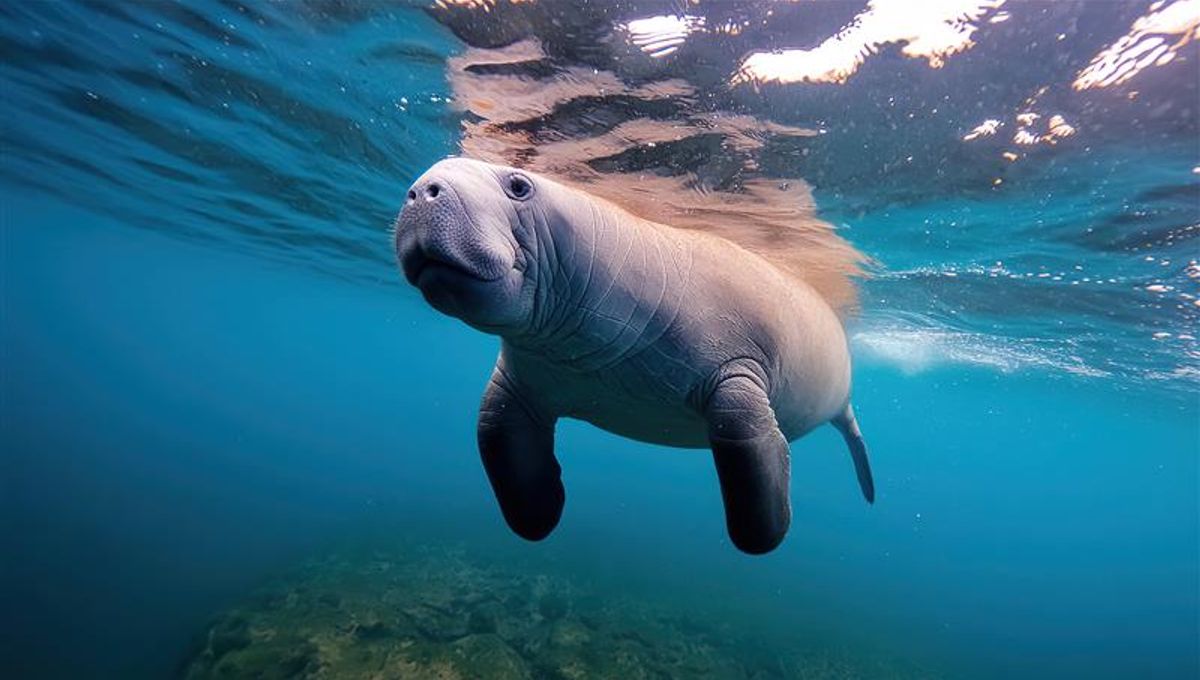
Manatees are a well-known staple of Florida waters, where they’ve been seen cavorting with dolphin pods, forming chaotic “mating balls”, and even being the victims of political graffiti. However, new research into the species’ Florida populations has suggested they might be a relatively new addition to the Sunshine State.
The paper – co-authored by University of South Florida anthropologist Thomas Pluckhahn and archaeology professor at George Washington University David Thulman – found that in precolonial Florida, manatees likely visited only occasionally as tourists before returning to the coasts of Cuba and the Caribbean islands.
By looking through archival records, the team found that routine sightings of manatees in Miami and St. Augustine only began to be recorded in the 1920s and 30s and that there were no described accounts of the species by explorers landing in Tampa Bay between 1528 and 1595. It wasn’t until the 1950s that manatee populations in Tampa Bay were deemed significant and the species began to settle as permanent residents.
The trigger for this sudden population increase is, ironically, thought to be due to the rise in sea temperatures – a factor now putting these gentle giants under threat.
The researchers hypothesize that the Little Ace Age – a period of intermittent cooling between the 1200s and 1800s – made Florida’s waters too cold for manatees to thrive. It wasn’t until these effects decreased and subsequent global warming caused sea temperatures to increase that the area’s waters became warm enough – and now potentially too warm – to sustain manatees.
“It is commonly assumed that Florida manatee populations were once larger than they are today,” Pluckhahn said in a statement. “Many will find the results surprising, not only because it contradicts this assumption but also because it indicates the complexity of changes that have taken place in the Anthropocene.”
Pluckhahn, who has been a part of archaeological excavations in the Tampa Bay area since 2008, described a lack of manatee bones found at archaeological sites in the area as fuel for further investigation into the species’ precolonial populations.
An analysis of nearly two million animal bones from 70 archaeological reports found pretty much no manatee bones in Florida. While further analyses did uncover manatee bones that appeared to have been modified for use as tools or ornaments, it’s thought that these were traded between native Floridian populations and those in the Caribbean islands where manatees were living.
Known as “sea cows”, these gentle giants can grow to around 3 meters (10 feet) long and live in both fresh and saltwater, but prefer Florida’s calmer rivers and estuaries. Abundance surveys conducted in 2015-2016 and again in 2021-2022 show overlapping intervals of estimated population size, meaning it’s unclear whether manatee numbers have increased, decreased, or remained stable through those periods.
However, after the Florida Fish and Wildlife Commission (FFWCC) reported a record number of manatee deaths in 2021, with 1,100 recorded cases, there’s evidence to suggest Florida’s manatee populations are under threat. This is echoed by the categorization of the West Indian Manatee (Trichechus manatus) – of which the Florida manatee is a subspecies – as “vulnerable” on the IUCN’s red list.
To protect the remaining manatee populations, local authorities have a number of laws in place to help ensure these big sea cows can safely graze in Florida’s water for many years to come.
This study is published in the journal PLOS ONE.
Source Link: Florida Manatees May Actually Be Relatively New To Florida